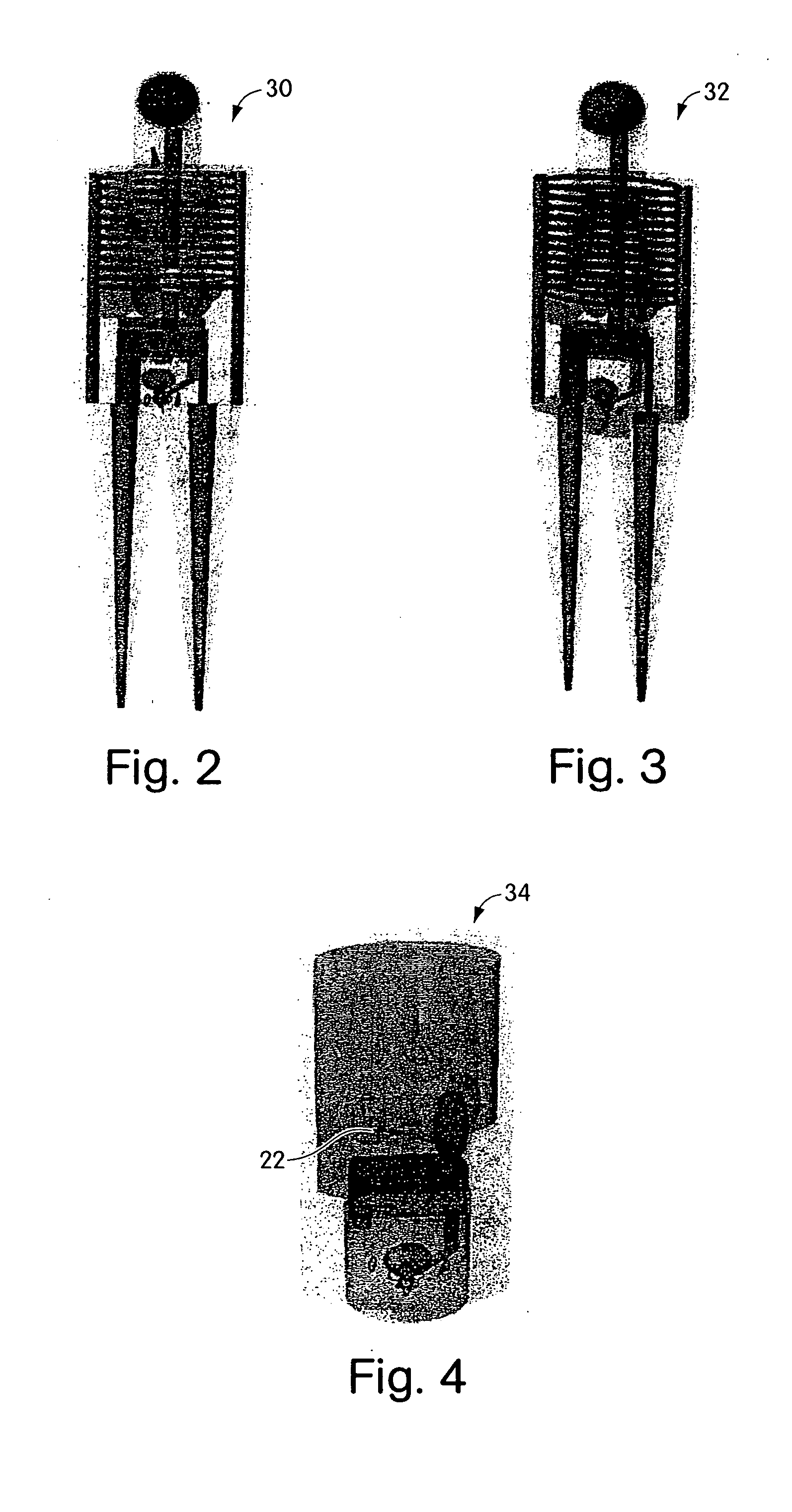Radiation phantom
a technology of phantoms and phantoms, which is applied in the field of phantoms, can solve the problems of increasing the risk of adverse side effects including death, imrt reimbursement being challenged, and imrt research and development being severely impaired, so as to improve the simulation of human anatomy, reduce the cost of production, and reduce the effect of computer memory
- Summary
- Abstract
- Description
- Claims
- Application Information
AI Technical Summary
Benefits of technology
Problems solved by technology
Method used
Image
Examples
Embodiment Construction
[0026] Embodiments of the invention provide techniques for testing and analyzing performance of radiating devices and for benchmarking and / or standardizing the provision of radiation. Systems, called Real-Virtual Phantoms or RVPs, of VPs and corresponding RPs are used in the testing and / or analyzing of radiating device performance, benchmarking, and / or standardizing. An anthropomorphic VP (e.g., a mathematical / numerical description of a phantom) composed of analytic geometric shapes simulates, in a simplified manner, the anatomy of a human at least in a region that is to receive radiation. A radiation distribution in the VP can be calculated based upon the shapes of components of the VP, physical characteristics (e.g., density distribution) of the components, and radiation parameters of a radiating device to apply the radiation. A real, physical anthropomorphic phantom is also produced and / or supplied that closely approximates the VP's component shapes and characteristics. Radiation...
PUM
 Login to View More
Login to View More Abstract
Description
Claims
Application Information
 Login to View More
Login to View More - R&D
- Intellectual Property
- Life Sciences
- Materials
- Tech Scout
- Unparalleled Data Quality
- Higher Quality Content
- 60% Fewer Hallucinations
Browse by: Latest US Patents, China's latest patents, Technical Efficacy Thesaurus, Application Domain, Technology Topic, Popular Technical Reports.
© 2025 PatSnap. All rights reserved.Legal|Privacy policy|Modern Slavery Act Transparency Statement|Sitemap|About US| Contact US: help@patsnap.com



